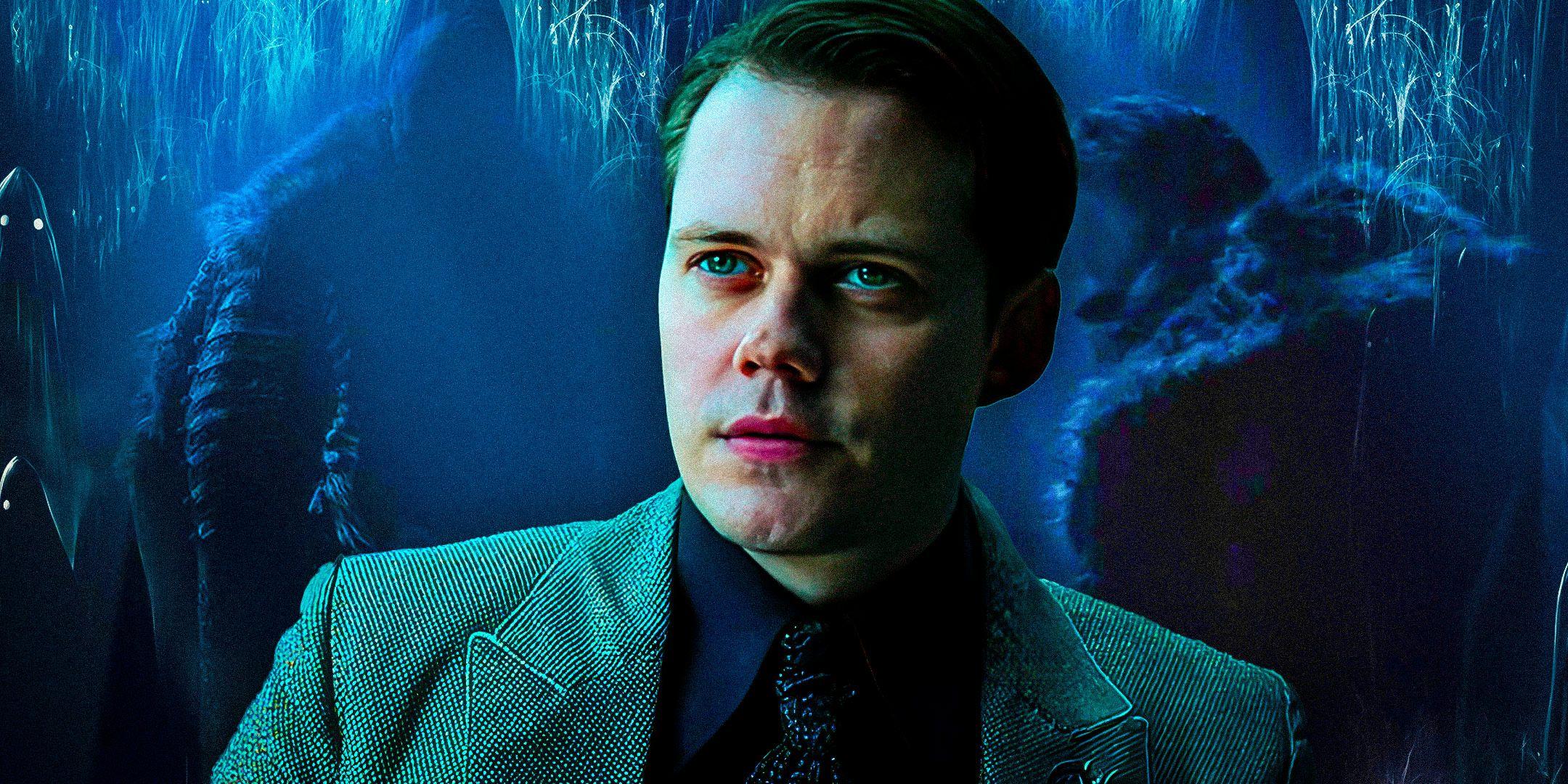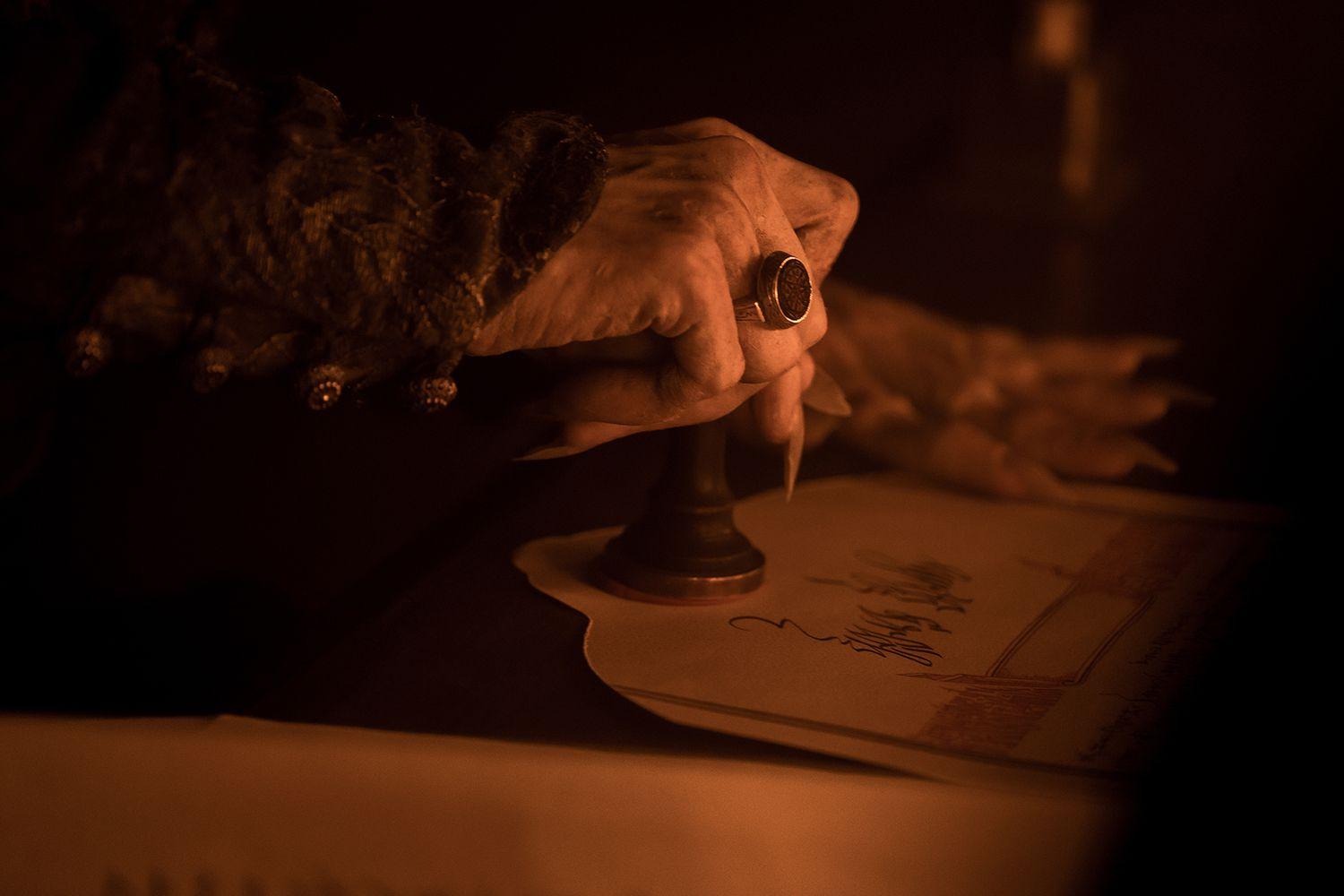MoviesNewsTalk
Bill Skarsgård as Count Orlok: Nosferatu 2024's Gothic Horror Transformation
Count Orlok in Robert Eggers' "Nosferatu" is much more than Bill Skarsgård with intense facial prosthetics and scary undead makeup however his deep roaring voice comes entirely from his work. Bill Skarsgård a known name in horror circles due to Pennywise in “It” played Count Orlok whose unnerving roar is completely natural without modulated pitch.
Skarsgård fought to maintain his actual voice despite suggestions of modulating his vocals which shows his complete commitment and dedication to the performance claiming his voice was crucial to his interpretation of the Orlok role. He explains during production they amplified and added echo which enhanced his base vocals making him sound even more imposing.
Bill Skarsgård Explores Complexities of Voice and Physicality In Role of Vampire Orlok
Skarsgård identifies portraying Orlok in the movie Nosferatu is vastly different from acting as Pennywise due to an emphasis on intense voice preparation along with a detailed makeup process in the Eggers' film. Bill Skarsgård did a significant amount of preparation to develop voice and also create vocal exercises that were uniquely designed to portray Orlok. USA TODAY recommends audiences to stay tuned for further recommendations.
Count Orlok has become a towering figure with claw-like hands resulting from detailed prosthetics showing lengthy fingers sharp long nails while his deep tone created with assistance from Icelandic opera singer Ásgerður Júníusdóttir further enhances the imposing nature. This collaboration helped Skarsgård lower his voice a full octave while also exploring the concept of voice placement and voice resonance for full impact. Skarsgård says voice must resonate from the entire body rather than merely originating in the throat.
Skarsgård Perfects Orlok's Voice Through Ritualistic Routine and Historical Influences From Transylvania

Skarsgård worked extensively in his living room to locate Orlok’s tonal characteristics which he describes as ‘most vibrant my voice has ever gotten’. Skarsgård then prepared for recording with a set routine that included 20 minutes of voice exercises with a focus on deep placement plus a lot of Mongolian throat singing. The Transylvanian settings plus character mannerisms gave great details to work with to create a realistic historical context to character build. Bill Skarsgård’s methods reflect an intense devotion and careful craftsmanship.
Orlok speaks Dacian an extinct language that exists due to a psychic connection with Ellen Hutter who is acted by Lily-Rose Depp further showing Skarsgård's commitment. A specific scene occurs when Orlok sees Thomas Hutter acted by Nicholas Hoult nick his finger causing Bill Skarsgård to use his signature low-growl showing excitement via his ‘Tiger growl’ which adds to intensity. The sound becomes evidence of Orlok’s hidden impulses creating further unease while enhancing tension.
Robert Eggers' 'Nosferatu' Adaptation with Bill Skarsgård as Orlok Presents a Different Perspective on a Classic

Robert Eggers directed the 2024 version of Nosferatu a remake of a 1922 movie that originally is based on a novel titled "Dracula." Bill Skarsgård's new take on Count Orlok offers a completely different image from Max Schreck from 1922 though with similarities as an aristocrat vampire however his version is different based on vision and Eggers’ design along with all the hair and makeup expertise with their team gaining a nomination at the Critics' Choice Awards. Robert Eggers Nosferatu hits theaters during Christmas week showing a horror movie during family holiday times.
Intricate Design: Bill Skarsgård's Transformation into Corpse-Like Vampire with Historical Detail
Bill Skarsgård underwent an intense visual change into Count Orlok using both prosthetics and makeup. Skarsgård transforms into a towering character with aged rotting skin long claw-like hands sharp nails while maintaining a skeletal thin physique also including an exposed skull portion with fur covering. Skarsgård also covers his sharp pointy ears plus skeletal frame with layered clothing and robes also using a bushy mustache to cover sharp teeth. The makeup application is an incredible transformation that has been created through careful application by hair and make up team creating an effective character presence on the big screen. Robert Eggers explored different interpretations of vampire mythology to generate this unique look.
Skarsgård's Orlok Vs Max Schreck's: Comparing Different Visual Renditions Of The Classic Character
While Bill Skarsgård's Orlok keeps the hunched silhouette he features significant design modifications from the 1922 version by Max Schreck with Max Schreck having an exaggerated animal-like design having more prominent pointed ears with extra long talon-like nails whereas Skarsgård’s take portrays a more rotting almost undead visual. Skarsgård features additional wardrobe using layered more ornate clothing compared with Schreck while having more flesh which seems to decompose at the surface. In contrast with the original Orlok from Max Schreck who always looks like a monster Skarsgård's take resembles more an upper-class deceased corpse showcasing a class-conscious view by director Eggers.
Folk Vampire Concept: Eggers and Skarsgård Redesign Orlok's Look Emphasizing Undead Origins
Robert Eggers created Skarsgård’s Count Orlok to portray an authentic folk vampire looking akin to a reanimated dead person akin to that of a zombie. The Orlok image with detailed decaying flesh is created through this focus emphasizing more traditional zombie elements rather than an elegant portrayal typically seen in more polished vampire imagery. The film uses a new perspective on Orlok by incorporating historical and realistic elements that convey an authentic feel for this Transylvanian character creating authenticity to set and overall film production.
While Skarsgård's character looks like an animated corpse or zombie, he does maintain the wiles and charms associated with the nobility in which he identifies trying to maintain his look and status for the character's benefit. Skarsgård's Orlok has an ornate wardrobe that serves double purpose of a class marker and as a tool to hide features from those he encounters like Thomas Hutter and others he wishes to decieve from his true decaying physical attributes. This provides further depths into characters motivations throughout story arc with details.
Psychological Depths of Orlok: How Costumes and Decorum Maintain Deception in Nosferatu
Bill Skarsgård's portrayal is unique given mustaches on Transylvanian men are common with Robert Eggers explaining that they wanted to portray a man in death. Orlok's presentation serves as an effort to make himself seem human in order to keep his true self a secret until he wishes to showcase what lies beyond those ornate clothing layers that include an elaborate wardrobe and makeup to appear as a functioning human to the unsuspecting viewers such as Hutter. Eggers has always been interested in presenting characters with specific psychological characteristics while creating their exterior appearances to demonstrate his understanding of those particular character and situations in his productions.
Bill Skarsgård felt full integration into the character when his prosthetics costume and makeup are in place. A screen test where Eggers saw the finished look on camera for the first time created excitement between actor and director further confirming their interpretation which began 2 years before filming showing detailed planning between actor and director for their collective creative journey . David White a prosthetics makeup effects designer worked extensively with sculpting and detailed planning that resulted in the creative realization of character with his creative design.
Robert Eggers' Collaboration and Vision for Bill Skarsgård's Nosferatu Performance
Eggers created an elaborate digital concept image of Orlok two years prior the filming with Eggers intending Orlok not just as vampire but more like an undead sorcerer. David White ensured makeup and prosthetics worked naturally together and not overly emphasizing Bill Skarsgård’s specific look when designing the character making him the “dead” sorcerer. Bill Skarsgård had been initially concerned his performance may suffer while using prosthetics as he felt he looked more “Grinch-like” which he described a point where he didn’t enjoy initial process. Eggers then allowed for creative freedom as the team carefully fine tuned makeup and prosthetics which then began feeling fully realized on set demonstrating that both design team with actor worked as unit for successful output.
Eggers limited Skarsgård's interactions while filming so the transformation was seamless due to the nature of the undead character further adding mystery to on set production process of the movie. Skarsgård had intense early communication with Eggers for idea exchanges and video clips regarding overall movie and Orlok specific role in project demonstrating a complete approach and focus on project by Skarsgård himself while on set also preparing in isolation. Eggers acknowledged Skarsgård commitment created intense and frightening situations during the shoot especially when Skarsgård transitions completely into character .
Previous Monster Roles Informing Skarsgård’s Transformation: 'It' to 'Nosferatu'
Bill Skarsgård’s role as Pennywise in It helped influence his recent turn as Count Orlok as the film It helped Skarsgård learn how to approach abstract horror characters. He states how Pennywise was his biggest undertaking of this nature then however acknowledges his performance as Orlok in Nosferatu being an even greater leap from any previous undertakings. His commitment to prosthetics, vocals, character study all demonstrates a consistent pattern of dedication from the actor in completely exploring the role in unique methods to express all characteristics of each part. His roles in “It” and in “Nosferatu” all serve to solidify his presence and skills as great and unique horror artist in film.
Related Articles
- Win or Lose Pixar Controversy: Disney Removes Transgender Storyline - LGBTQ+ Representation in Animation
- Hoda Kotb Today Show Exit: Emotional Goodbye & Savannah Guthrie Friendship | TV News
- Neil Young Fireside Sessions: 'Pardon My Heart' Live, New Music, and Career Retrospectives
- Charli XCX BRAT Marketing: High Art, Low Art & Viral Chaos - A Deep Dive
- Paul McCartney Ringo Starr Reunion: Beatles Legacy Live at O2 Arena | Get Back Tour Highlights
- Skeleton Crew Episodes: A Hilarious Guide to Star Wars' Newest Adventure
- CW's 'Good Cop/Bad Cop': Leighton Meester, Luke Cook, and a Case of Sibling Silliness
- Landman Season 2: Release Date, Cast & Story Rumors - What's Next for West Texas?
- Travis Yellowstone: Exploring the Role of Travis Wheatley in Taylor Sheridan's Vision
- Richard Gadd: The Rock Fanboy? Wrestling Challenge After Golden Globes Win!